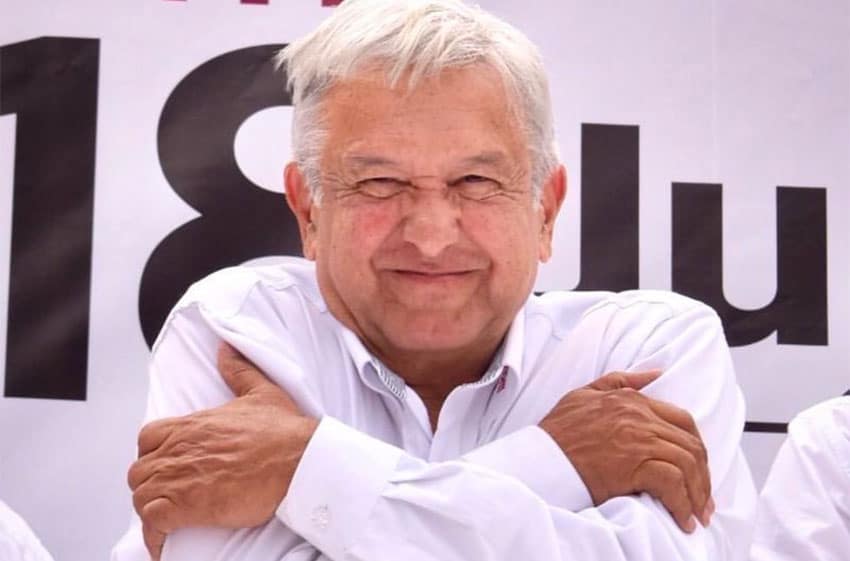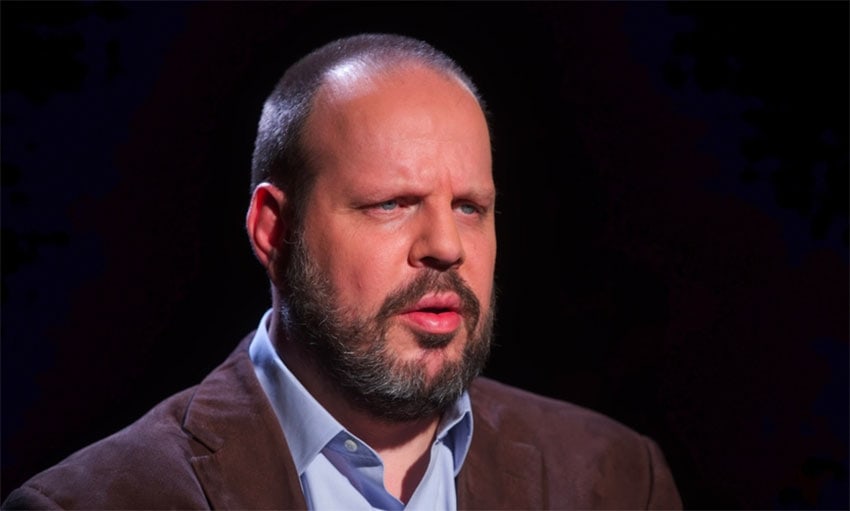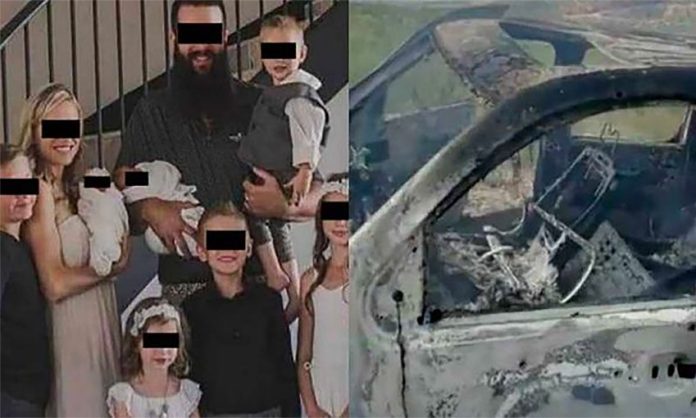Impunity, collusion between police and organized crime, immense cartel firepower and territorial control, poor distribution of government forces, inadequate police funding and dismal police salaries: are all factors that contribute to record levels of violence in Mexico.
The third factor – cartel strength and sway – has recently been on terrifying display: 13 state police killed in an ambush in Michoacán that was attributed to the Jalisco New Generation Cartel (CJNG); Culiacán residents terrorized by an unprecedented show of strength from Sinaloa Cartel gunmen during an operation to arrest a son of El Chapo; women and children murdered in broad daylight in a heinous attack near the Sonora-Chihuahua border.
All the while, President López Obrador has remained committed to the government’s non-confrontational security strategy.
“You can’t fight fire with fire,” he says, arguing that the way to combat violence is to address its root cause – poverty – through social programs and economic development that give people viable alternatives to a life of crime.
But the so-called “abrazos, no balazos” (hugs, not bullets) approach has not reduced violence during the government’s first year in office (2019 is on track to surpass 2018 as the most violent year in recent history) and, according to a prominent security analyst, the failure to respond forcefully to acts of extreme aggression, such as Monday’s attack on the LeBarón family, generates an environment that is conducive to yet more violence.
Writing in the newspaper El Universal (linked page in Spanish), Alejandro Hope attempted to make sense of the situation that led to the barbarous killing of three women and six children, including twin babies.
“How do you interpret an atrocity of this class? . . . I don’t know completely but it occurs to me that these kinds of incidents happen because nothing happens [in response]. The Mexican state has not drawn lines in the sand. It appears that there is no act, as cruel as it may be, that is capable of triggering an extraordinary reaction by the institutions of security and justice,” he said.
Such a reaction, Hope contended, would go beyond pursuing the “direct perpetrators” of a violent crime.
Rather it would entail an “explicit commitment” on the part of the government to dismantle the structure of the criminal group that is responsible as well as its “political and police protection networks.”
However, responding to violent crime in that way “is not on anyone’s agenda,” Hope wrote.
Therefore, criminals can continue to commit crimes with the brutality to which they are accustomed and “sow terror in entire regions” in the process, he wrote.

“If it doesn’t matter if you murder one person or nine, if there’s no additional risk for burning babies [to death], the murderers will continue to do it. It’s as simple, and as awful, as that,” Hope said.
The security analyst said the situation is made even worse because it is “fully proven” that the state is incapable of controlling “enormous swathes of territory.”
As an example, Hope cited the version of events presented by the government on Tuesday about what happened on Monday after the LeBarón family was attacked.
At about 1:20pm – less than 20 minutes after the ambush – Julian LeBarón was already asking for help from authorities, he said.
However, the army, National Guard, state police and municipal forces from Agua Prieta, Janos, Moctezuma and Zaragoza didn’t reach the crime scene until 5:00pm simply because they had to travel large distances to get there.
In Bavispe, Sonora – where the attack took place – government data shows that there are no more than two police, Hope wrote, while in the neighboring municipalities of Bacerac and Huachinera, officer numbers are no greater than seven.
In that context, the analyst was highly critical of the way in which the National Guard has been deployed, pointing out that there are just over 4,000 guardsmen in Sonora and Chihuahua, which together represent 21% of national territory, while there are just under 4,000 in Mexico City.
“That, to put it mildly, is an absurdity,” Hope wrote.
The role of a force like the National Guard should not be to replace police in urban areas but to control territory, give the state a presence where the deployment of police is almost impossible, combat criminal groups in isolated parts of the country and prevent tragedies such as that in Bavispe, he said.
The government has also faced criticism for using the new security force to ramp up enforcement against migrants rather than fight crime. More recently it came to light that the Guard has been given a new mission: cracking down on the ride-hailing service Uber at the nation’s airports.
The events in Culiacán served as another example of the challenge the government faces to effectively control parts of Mexico.
With gunmen carrying out attacks across the city and setting up fiery blockades, the government’s security cabinet decided to release Ovidio Guzmán in an attempt to halt the violence, effectively conceding defeat to the Sinaloa Cartel.

“What we saw in Culiacán was the parallel state showing itself,” Edgardo Buscaglia, an expert on organized crime at Columbia University, told The Guardian.
He said that fighting poverty on its own will not be enough to put an end to violence, arguing that the government needs to implement a coordinated strategy to dismantle political and business interests that profit from and protect organized crime.
“What López Obrador needs is not a security strategy. What he needs is an anti-mafia strategy,” Buscaglia said.
The government says it is already focusing on attacking the financial structures that allow cartels to operate – Security Secretary Alfonso Durazo said in late October that bank accounts containing more than 5 billion pesos US $261.5 million) have been frozen – but their operational strength does not appear to have been weakened.
The government has also said that strengthening state and municipal police is a priority but scant progress has been made so far.
The executive secretary of the National Public Security System, Leonel Cota Montaño, said in October that Mexico’s states and municipalities are defenseless against organized crime and impunity.
More than 600 municipalities have no police officers and around 2,000 municipalities have fewer than 50, he said in a speech to the lower house of Congress.
Cota told members of the Public Security Commission that there is an urgent need to provide municipalities with greater resources for police.
State police also lack funds to purchase essential equipment. According to a report in The Guardian, a Michoacán policeman complained that officers have to buy their own bullets and are provided with cheap and flimsy helmets.
“We don’t have the means to defend ourselves,” he said. “We don’t have the support we need to take on any criminal group.”
But even if forces successfully arrest criminal suspects, the consequences are minimal.
López Obrador has pledged to eliminate not only corruption but also impunity. But a study published in September showed there had been negligible improvement in prosecution rates over the past year.

While combating rampant impunity is no doubt a key ingredient to reducing violence, any chance that prosecution rates will improve quickly appears unlikely.
In the short term, Hope, the security analyst, and many others, believes that Mexico has to rethink its security strategy in the wake of the recent string of violent acts, none of which shocked the nation more than the attack on the LeBarón family.
“What happened on Monday should lead to a review of security policy. When these things happen, the trajectory of the homicides curve becomes irrelevant. If it is possible to kill babies, hunt children and destroy families without triggering a reaction of unusual vigor on the part of the authorities, there is only one conclusion: there is no limit to violence other than the imagination of the murderers,” Hope wrote.
“We have to begin to draw lines in the sand – without delay, before the next tragedy surprises us.”
Mexico News Daily
